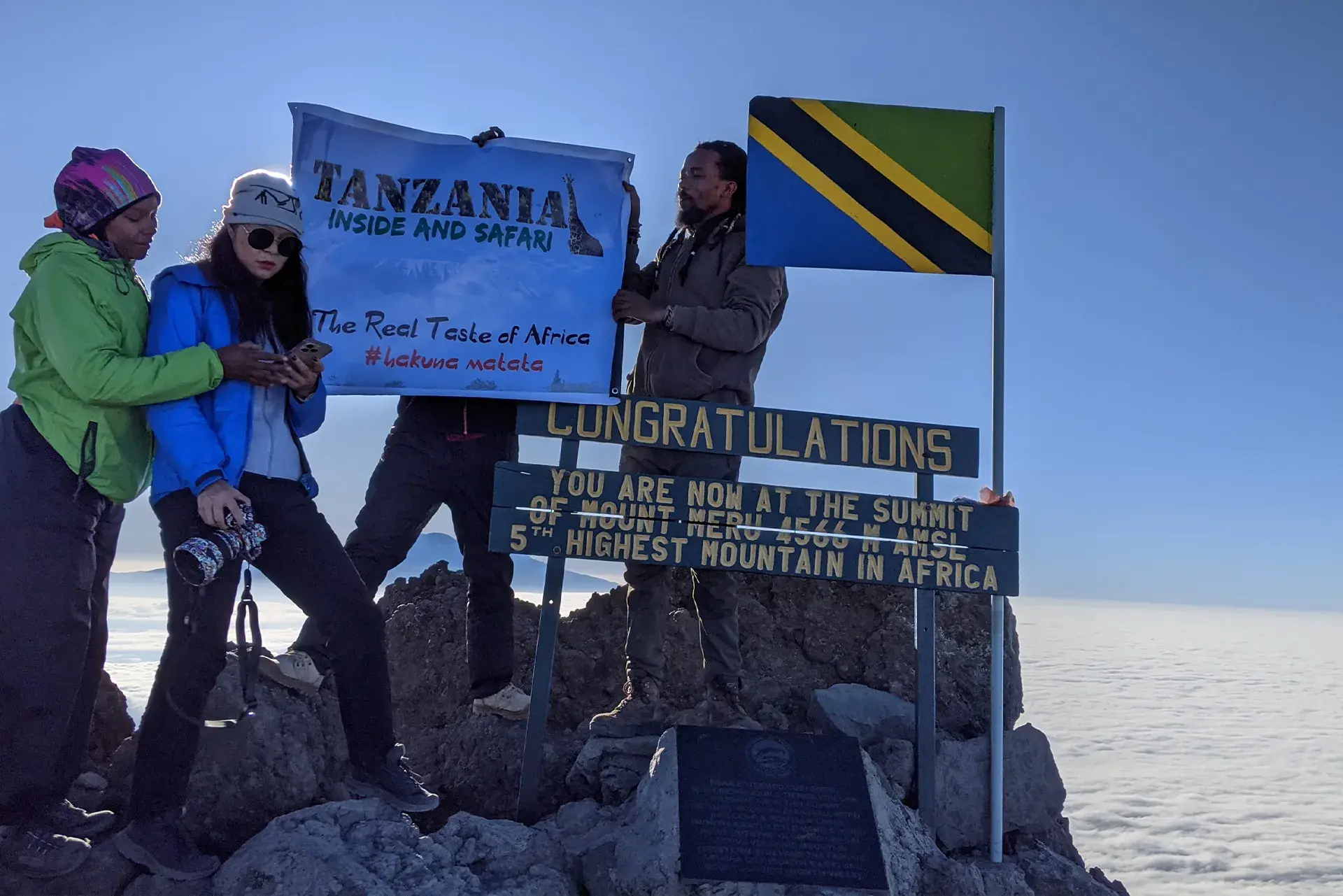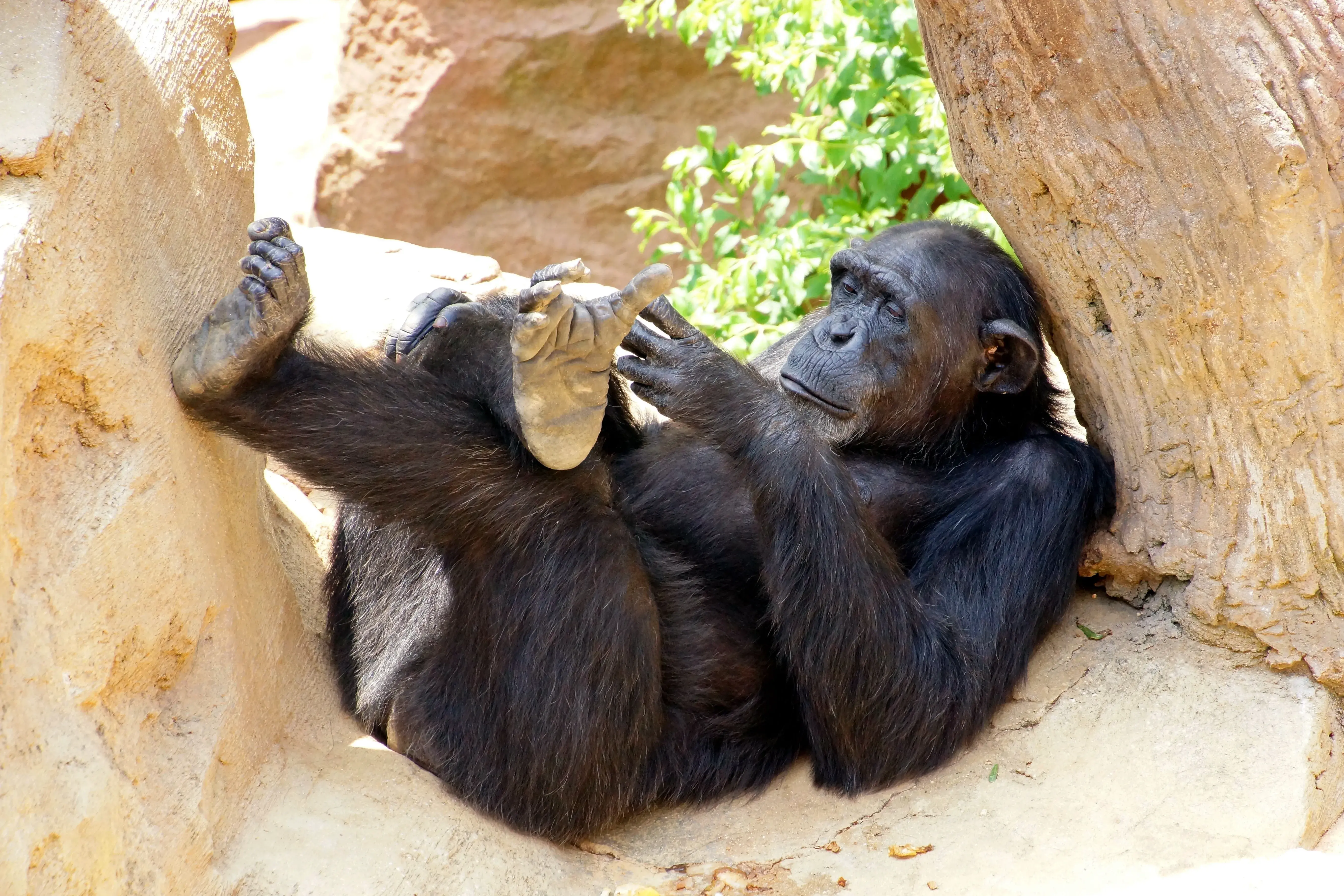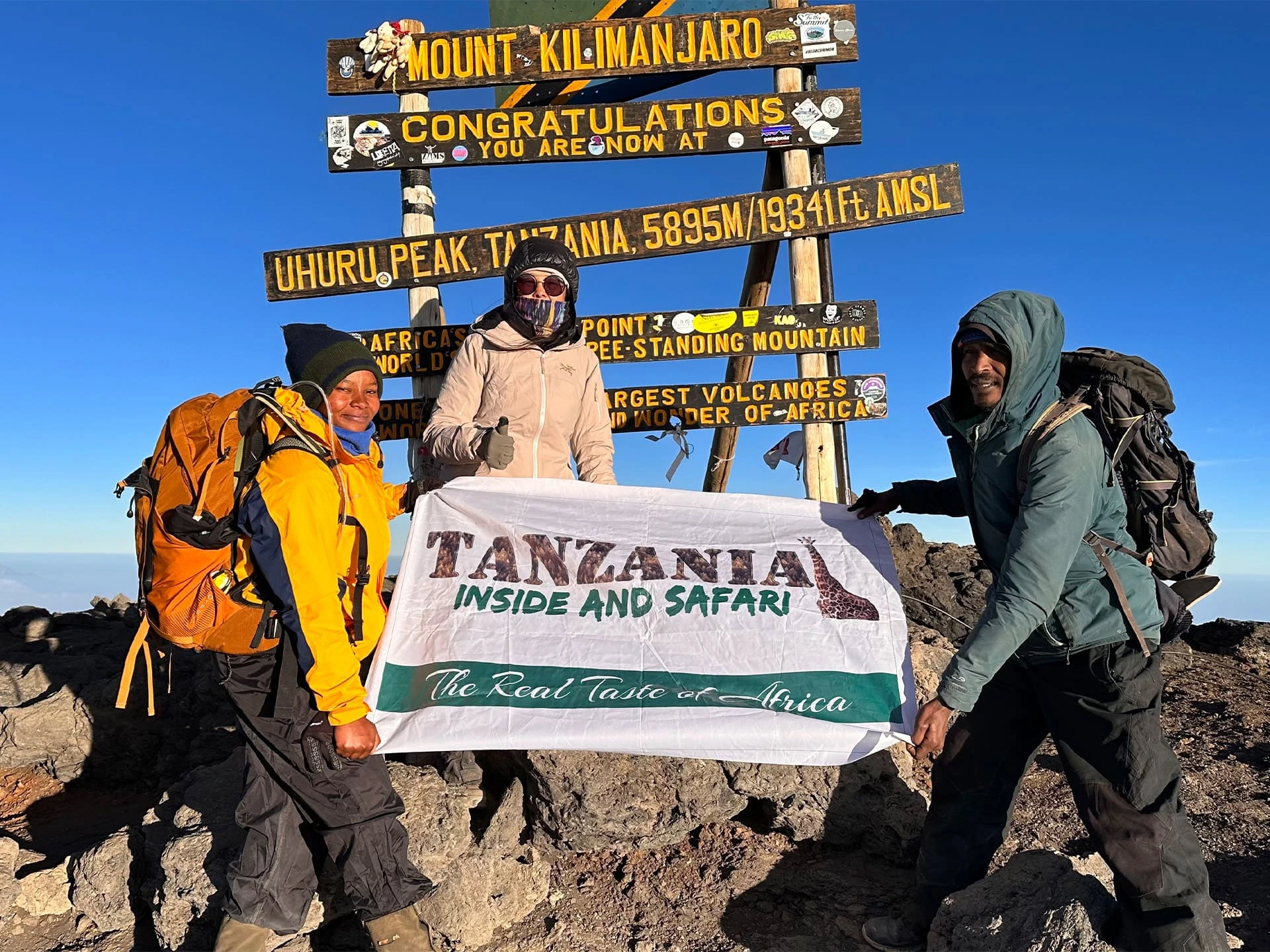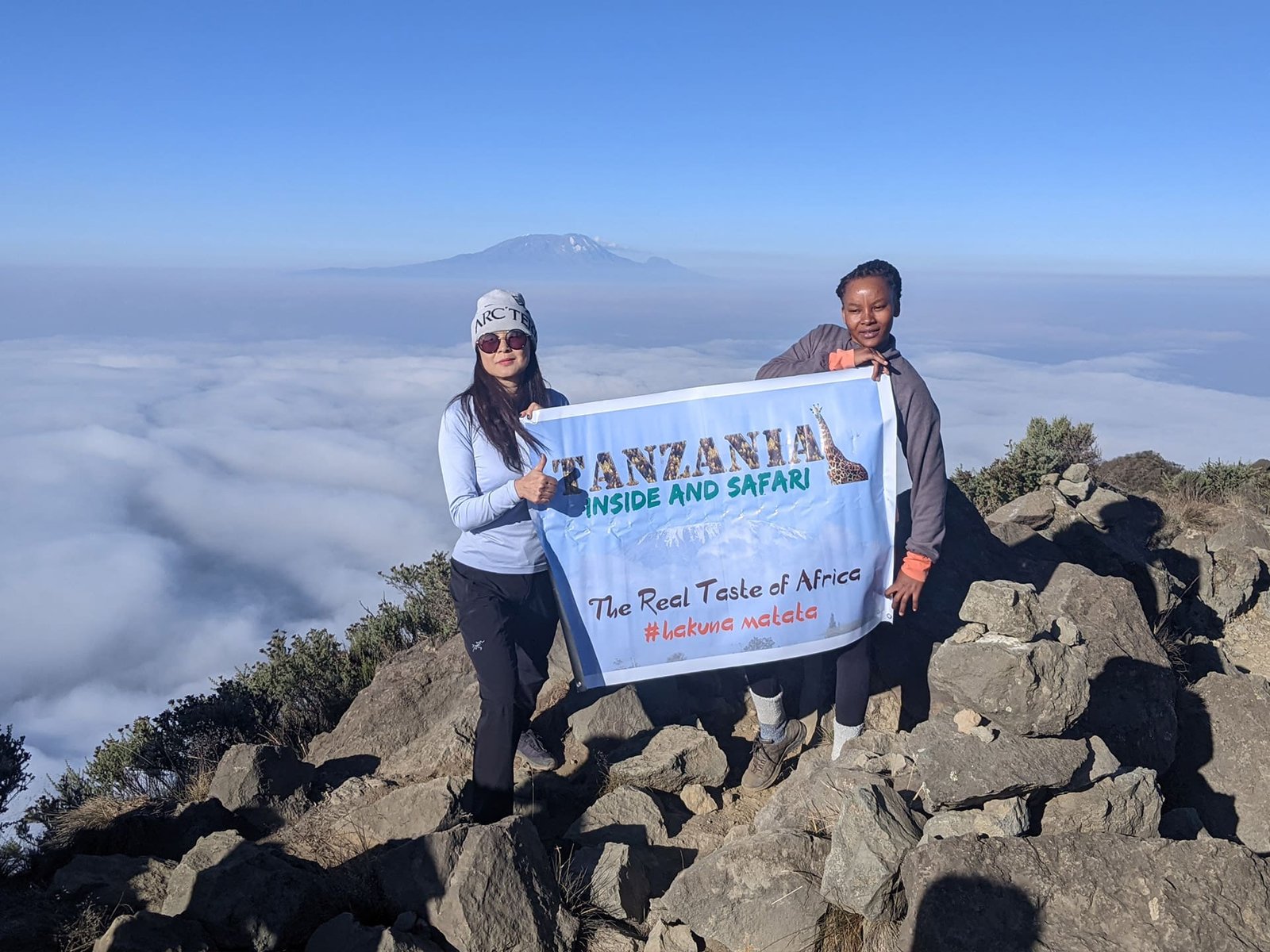
Mount Meru Climb
A thrilling hiking adventure in the pristine wild
Magnetized by Mt Kilimanjaro, the hikers often overlook Mt Meru, the second highest peak of Tanzania. Towering over Arusha National Park, Mount Meru offers both an excellent warm-up exercise for Kilimanjaro, in addition to being a stunning trekking experience in the wild by its own right.
Mount Meru trekking is a real adventure. The slopes of this dormant (yet active - the last eruption was in 1910) volcano offer fascinating panoramic vistas and bustling wildlife around.
This volcano was “born” around 500,000 years ago, and it’s very first eruption virtually exploded its eastern side, creating its, peculiar appearance. In addition to that, Mt Meru has one of the deepest craters - over 1,500 meters!
read more
close
Why Climb Mount Meru?
There are several reasons to include Mount Meru into your Tanzania adventures list. Regrettably, this volcano is often out shadowed by Kilimanjaro - located in the immediate vicinity, it attracts more international hikers, thus making it a secondary hiking destination or a warm-up exercise. The majority of hikers, however, ignore it altogether.
We at Tanzania Inside and Safari firmly believe that Mt Meru hiking is a great adventure by itself because of these reasons:
Reason 1 - Stunning scenery
Mount Meru features incredibly captivating scenic vistas. The trek to Socialist Peak (4566 m/14,980 f), traverses several climatic zones, offering diverse landscapes and unparalleled scenes for wildlife photography.
The views from the summit area of Mt Meru are truly rewarding - valleys, forests and meadows, all buried in lush verdure, and magnetizing view of the Kilimanjaro peak looming on a horizon will surprise even the most seasoned travelers.
Reason 2 - Rich wildlife
Nestled in Arusha National Park, Mount Meru is one of the few mountains of the world still densely inhabited by the wildlife, which freely roam on its slopes. The hikers are likely to experience multiple encounters with different animals, including buffaloes, antelopes, monkeys, giraffes and, with some luck in your pocket, even elephants.
Reason 3 - No crowds
Meru is not yet popular among hikers. During the high season, on the popular routes of Kilimanjaro (Marangu and Machame) there is a chance of “traffic jams”, something that you will never experience on the trails of Meru. For those who are seeking reclusive, tranquil hiking in the wild, Meru is a great choice.
Reason 4 - Mount Meru hiking tour is affordable
In contrast to other hiking adventures, Mt Meru climb is quite an affordable activity. Because no tents are necessary (overnight stays on Mt Meru are in huts), the number of crew is small, reducing the travel costs. Therefore, for those with shrinking budgets, Meru can become a good and affordable alternative.
Reason 5 - Excellent addition for the safari tour
The wildlife of Tanzania is what attracts most of the visitors to the country. Tanzania has been voted the best destination for wildlife viewing several years in a row.
At the same time, flying over half of the world surely justifies having more diverse experiences. Thus, pairing your safari tour with a Meru climb may be an excellent idea to get the best of Tanzania.
Mount Meru Expedition - Essential points
The key features of Mt Meru expedition:
You do not need special alpine skills or experience to take part. Together with Kilimanjaro, Mount Meru is a “hiking”, not climbing “mountain”. Neither ropes, nor ice axes or helmets are necessary - the trekkers reach the Socialist Peak (4,562 m/14,967 f) on foot, and for the majority of them, Mt Meru is the first mountaineering experience.
Ordinary fitness level is ok. Meru hiking does not require anything special - as long as you can comfortably walk up to 10 km/6 miles per day, you can do it. Trekking level there is moderate.
Acclimatization to altitude is important! Do not take it lightly - the altitude of Mt Meru is serious enough to be the cause of altitude sickness. Follow these fundamental rules acclimatization:
The crew will take care of everything. Under the TANAPA (Tanzania National Parks Authority), a qualified guide should accompany the hikers. The team of porters and cooks are responsible for carrying your luggage, camp organization, food preparation, etc. Under the local customs, in order to promote employment, half of the porters crew should be hired from the Meru tribe, which live in the foothills of Mount Meru.
Overnight stays on Mount Meru are in huts only. In contrast to Kilimanjaro, where tented camping options are available on all routes but Marangu, on Mount Meru one should be ready to stay in huts only.
An armed ranger will be accompanying your party up to the summit camp. In order to make your stay in the wild safe and protect the animals from poachers, an armed ranger will be hiking with you up to Saddle Hut Camp (see itinerary below).
OVERVIEW
- Duration 6 days (4 day trek)
- Difficulty Medium
- Traffic Small
- Can be Tailor-made Yes
Tour Description
Mount Meru Climb - day-by-day itinerary
There is only one route leading to Socialist Peak - “Momella”. Three and four day hiking are available The Momella route approaches Mount Meru from the eastern face, moving up through the northern ridge to the peak.
The total trek distance is 45 km/27 miles.
3-DAY VS 4-DAY HIKE - HOW TO CHOOSE?
If the schedule allows and you have not gained acclimatization on other mountains before (meaning that you have successfully climbed anything above 4,000m/13,123f and did not get affected by altitude sickness), we always recommend choosing a longer option. The more time you spend on Mount Meru - the more effectively your body adapts to the altitude, making the whole experience less stressful for it.
Below we have shared a 4 day / 3 nights Meru climb but you can do it in 3 days / 2 nights which we do not recommend due to long walking distance from Miriakamba Hut to the Socialist Peak and back all the way to Momella Gate.
ITINERARY
Leaving early in the morning from your accommodation in Arusha or Moshi and driving to Momella gate in Arusha National Park. Driving takes about 3 hours from Moshi and about 1 hr from Arusha. At the gate you will clear your trekking permits, meet up with your porters, guide, cook and game ranger, and start climbing. You will pass open grassland which will give you a good opportunity to see buffaloes, warthogs and other grazers.
You will cross the Ngare Nanyuki River and continue climbing through mountain forest. There you will have chance to see many different kind of birds and black and white colobus monkeys. Finally you will reach Miriakamba Hut where you will stay overnight.
Second day climbing is quite short but demanding. You will start early in the morning and ascent steeply through lush mountain forest full of birds to reach the halfway point of Elephant Ridge. There you can see the crater. After 3 to 5 hours climbing you will reach Saddle Hut where you will have lunch.
In the afternoon you will have another hiking to Little Meru (3794 m) for superb views before sunset. Then you will return to Saddle Hut for overnight. It is good to go to sleep early so that you get enough rest for the next day’s hiking.
You will start climbing between 1 to 2 at night. The route is very steep towards Rhino Point (3850 m) and from there towards the summit along very narrow ridge. You will reach the mount meru summit, Socialist Peak, (4566 m) right at the sunrise.
The sceneries there are stunning; you will see Mount Kilimanjaro in close distance. After taking photos on the summit you will descent back to Saddle hut.
Note: On icy conditions or strong wind it is not necessarily possible to pass the ridge between Rhino Point and summit. You guide will decide if the conditions are not good enough to continue.
You will leave about at 8.00 in the morning and descent to Momella gate. You can choose longer or shorter route down. On the longer way down you have very good changes to see wildlife and the ash cone. Once at the gate, it’s time to tip your porters, guide, cook and game ranger. After that your transportation back to your hotel will be waiting for you.
INCLUDES & EXCLUDES
Transfers:
- Pick-up and drop-off at Kilimanjaro International Airport;
- Transfer to the trailhead in Arusha National Park;
- Pick-up at the end of the trek.
- All fees collected by the Arusha National Park for Mt Meru trekking (conservation fees, hut fees, crew fees, vehicle fee, rescue fee and all other fees collected by the Tanzania National Parks Authority).
- One night at hotel before the expedition and one night after; The hotels have everything for your comfortable stay - caring staff, nice rooms, reliable Wi-Fi, restaurant and swimming pool);
- Accommodation in huts on the trek.
All hotel accommodation is based on a sharing basis (i.e. you will be sharing with your travel companion a twin/double room. If you travel alone, we will match you with a same-sex adventurer). Single occupancy in a hotel is available upon request and extra chargers apply. Single accommodation is not available in huts while on the trek, because it is the park rangers who assign the trekkers to the huts.
Meals:
- Breakfast in the hotel before and after the hike;
- All meals on the hike. Our Mount Meru diet includes energy-rich and highly nutritious meals prepared by our professional high-altitude cooks. In our menu you will find different soups, garnishes, several types of fish and meat, fresh fruit and vegetables; vegetarian/gluten-free/halal options are available at no extra cost;
- All drinks on the hike (coffee, tea, hot chocolate and water).
- 4-inch (10-cm) thick and comfortable sleeping mats;
- All group equipment;
- Oxygen cylinders and oximeters;
- Complete medical kits. Climbing crew:
- Professional guides, licensed by the Tanzania National Park Authority. All our guides are the holders of Wilderness First Responder or Wilderness First Aid certifications and have 7+years of successful mountaineering experience;
- Dedicated support crew (assistant guides, camp master, porters, cooks, etc.
PRICES
$1,162
Kilimanjaro Frequently Asked Questions
Mount Kilimanjaro is one of the most iconic climbs in the world, drawing trekkers from all over the globe. However, preparing for this adventure involves many questions. We've compiled answers to the most common ones below. If you need more details, feel free to contact us for personalized assistance.
- Hike slowly to allow your body to adjust to the reduced oxygen levels.
- Drink 3-4 liters of water daily to stay hydrated.
- Participate in short acclimatization hikes to higher elevations during the climb.
- Consider climbing Mount Meru or other lower-altitude peaks as training.
- Opt for routes that last at least seven days to give your body more time to adjust.
EXCELLENT

Based on 30 reviews



Roderick P


William J


Jane R
Let's talk about your
Trip to Africa!
All our custom itineraries are inspired by our travel experts and positive feedback from past travelers. We're sharing them so you can get a taste of the experience. However, we're flexible and can tailor-make an itinerary just for you. Let us know your preferences (parks, accommodation, timing, etc.), and our safari experts will create a personalized proposal. USEFUL ARTICLES PLAN MY TRIP
Let's talk about your
Trip to Africa!

Unleash the wild beauty of Africa! Trek Mount Kilimanjaro, roam the Serengeti, and explore Ngorongoro Crater—your extraordinary safari awaits. Book Your Dream Adventure Today!
Close












